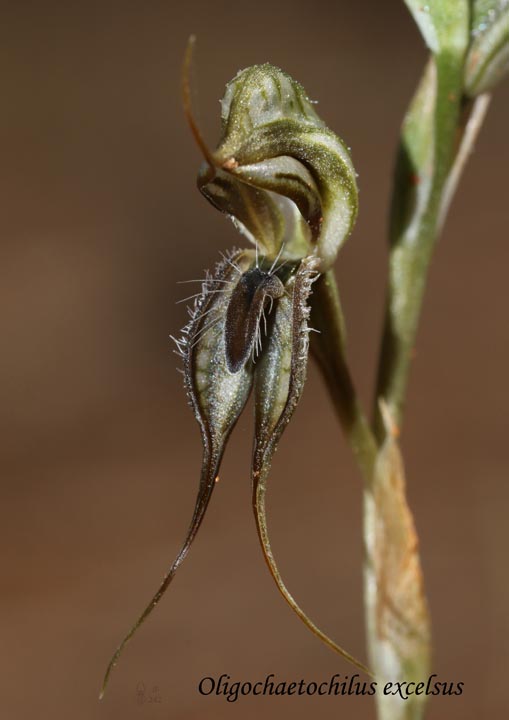
Oligochaetochilus excelsus, an impressive name for the winning photo, taken by John Fennell. It was originally formally described and named Pterostylis excelsa by Mark Clement in 1986 from a specimen cultivated from a tuber taken from Eyre Peninsula. This was subsequently published in the fourth edition of Black’s Flora of South Australia. In the early 2000s, the genus Pterostylis was split into several different genera of which Oligochaetochilus was one.
Although not everyone accepted this change, it is helpful for understanding the characteristics of this group. They are found only in Australia and are primarily a semi-arid inland group, sometimes the only orchids to occur in a locality.
Bob Bates has documented some of the drought tolerant and drought avoidance features found in this group as follows.
Drought tolerance:
- Large moisture-storing tubers, shallowly buried to take advantage of light rain.
- Waxy leaves pressed flat to the soil thus avoiding water loss.
- Fast growth, some species are able to flower on just two good rainfalls.
- Leaves senesce (die off) before or soon after flowering begins; moisture and food from the leaves is then stored in the tuber and scape. Leaves are able to absorb moisture from dew.
- Leaves also contain an anti-freeze and can tolerate black frosts.
- Just one month after rain a replacement storage tuber is produced as large as the old.
Drought avoidance:
- Plants favour damper microhabitats, growing at the base of larger rocks and in seepage zones or on the cooler damper south side of bushes.
- Tubers of desert species do not usually germinate in drought years.
- Leaf senesces (dies off) before hot weather meaning plants avoid moisture loss during flowering.
- Plants cease respiration in long dry periods and resume after rain even up to three months later, staying green even in bone dry soil.
- Leaves are pressed to the soil.
References:
https://en.wikipedia.org/wiki/Pterostylis accessed 10 May 2018
Jessop, J. P. and Toelken, H. R. (eds) (1986). Flora of South Australia. 4th ed. Adelaide: Government Printers Adelaide.
Bates, R. J., ed. (2011). South Australian Native Orchids. Electronic version. NOSSA


